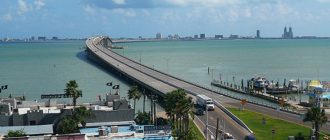Are you interested in learning about the artifacts of the Plateau Indians? Do you want to discover how the artifacts were used in the lives of the Plateau Indians? Read our guide for more facts and information…
The Plateau Indians were constituted of a variety of Indian tribes and their population dates back 12 000 years. These tribes included the Spokane, the Walla Walla, the Yakama, the Snakes and many more. These Indians lived in an expansive region in the western part of North America. The tribes spanned the area between the Cascade Range and the Rocky Mountains north of the Great Basin; this region includes much of the eastern region of modern Washington state. As a result of these Indians living in the west prior to European settlement the tribes were not adversely affected by the new settlers. Unlike, the eastern Indians the Plateau Indians were able to learn to work with the Europeans and subsequently prospered through trade of fur and metal as well as other goods. The Plateau Indians are known to have been nomadic tribes with a strong reliance on gathering fruit and vegetables in conjunction with hunting game.
Arrowheads and Tools
The tools of the Plateau Indians were commonly made of buffalo feces, stone or bone. As the artifacts become more recent it is not uncommon for metal to be involved in the composition due to trade with the new settlers. Antlers were collected by the Plateau Indians as they were used as tools for digging. Another important artifact is the stones and bones that have been shaped to form fishing hooks. Arrowheads were also important artifacts to the Plateau Indians. These artifacts were generally made from wood and then tipped with a small stone. Sometimes, however, in place of wood stone would be used to create the entire arrowhead. It is also common to note that the arrowheads are frequently notched at the base.
Bags and Baskets
The Plateau Indians were nomads and relied heavily on a hunter and gatherer society meaning that bags and baskets were important tools in their existence. Woven bags are important artifacts and are usually designed out of grasses including rye grass, bear grass or hemp. The bags varied in shape and size to accommodate the different needs they had. These artifacts were especially important tools during the harvest.
Moccasins
Clothing pieces are some of the more difficult artifacts to find. The challenge in discovering clothing artifacts is that over time they frequently suffer wear and tear until they are destroyed. Enough artifacts have been found however to learn about the designs commonly used. Moccasins were one of the most important articles of clothing for the Plateau Indians as it protected the peoples’ feet. It was traditional to construct moccasins from deer hide or salmon skin. Most other articles of clothing were also made from the hide of animals found in the region. The clothing was not left unadorned as decorations were popular. The Plateau Indians decorated these artifacts through the use of beads and occasionally porcupine quills.





